
Customer SUCCESS STORY
Thermophysics for Space Applications and Sustainable Building Projects
The Laser Flash Apparatus in Use at the Österreichische Gießerei-Institut ÖGI
The Österreichische Gießerei-Institut (ÖGI, Austrian Foundry Institute) is the joint research institute of the Austrian foundry industry with about 40 employees. ÖGI and NETZSCH have been collaborating for over 50 years. All NETZSCH analytical instruments in ÖGI’s thermophysics laboratory have proven themselves through use over an extraordinarily long period of time, usually around 20 years.
In this customer story, Dr. Andreas Cziegler, research assistant in the physics laboratory and simulation group at ÖGI, talks about his research in the field of space applications and sustainable building projects using NETZSCH analysis instruments.
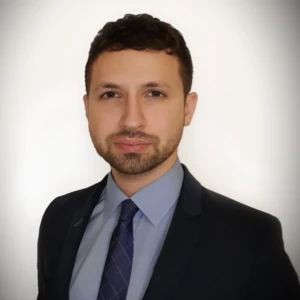
„Along with the reliability of the analytical instruments, the excellent customer support provided by NETZSCH-Gerätebau GmbH has been decisive in this long-year collaboration. The long-term availability of spare parts has been just as important as the excellent and always available on-site service, along with the option for comprehensive maintenance of the systems directly at NETZSCH-Gerätebau GmbH in Selb.“
The Österreichische Gießerei-Institut (ÖGI, Austrian Foundry Institute) is the joint research institute of the Austrian foundry industry with about 40 employees. It handles issues in the foundry industry and operates its own test foundry, where application-oriented research is carried out in the respective casting processes and casting of alloys. Furthermore, the ÖGI is also one of the leading testing laboratories in Austria. Here, ÖGI moves far beyond the actual core area of the foundry and metal technology industry. Their range of research and testing services covers a broad spectrum of applications: Non-destructive testing by X-ray and computer tomography, where samples from the building materials industry or pharmaceuticals are tested in addition to cast components; thermophysics, with a broad range of materials as well as numerical simulation of casting processes and failure analysis; and even joining/surface and bonding technology.
As a non-university research institute, ÖGI is accredited as a testing laboratory for 26 test methods by Accreditation Austria in the operational areas of chemical laboratory, mechanical laboratory, physical laboratory and metallography. The testing laboratory complies with the requirements of EN ISO/IEC 17025:2017. In the thermophysical laboratory, material parameters such as Thermal ConductivityThermal conductivity (λ with the unit W/(m•K)) describes the transport of energy – in the form of heat – through a body of mass as the result of a temperature gradient (see fig. 1). According to the second law of thermodynamics, heat always flows in the direction of the lower temperature.thermal conductivity, thermal expansion, and heat capacity are determined from very low to very high temperatures. The data are of great importance for any material development, but also serve as input parameters for numerical simulations. The range of materials in the thermophysical laboratory is not, however, limited to metallic alloys, which are primarily characterized in the solid state but also in the liquid state. It also includes sand-based molding materials used in the foundry industry, building materials such as gypsum and various woods or wood-based materials, glass varieties and ceramic materials.
NETZSCH Laser Flash Analyzers in Use at ÖGI
The wide range of materials, some of which decompose at high temperatures and are used in the construction and aerospace industries, as well as the measurement of metallic alloys in the liquid state, place high demands on the measurement environment. In order to be able to cover this wide range of materials up to very high measuring temperatures of well over 1000°C, particularly reliable measuring instruments are a prerequisite – and the ones by NETZSCH-Gerätebau GmbH meet this need.
ÖGI and NETZSCH have been collaborating for decades – over 50 years. All NETZSCH analytical instruments in ÖGI’s thermophysics laboratory have proven themselves through use over an extraordinarily long period of time, usually around 20 years. Among these are two LFA 427 systems (figure 1) that are operated in cooperation with the Materials Center Leoben (MCL); the first one has been in operation here since 2003, and the second since 2015.
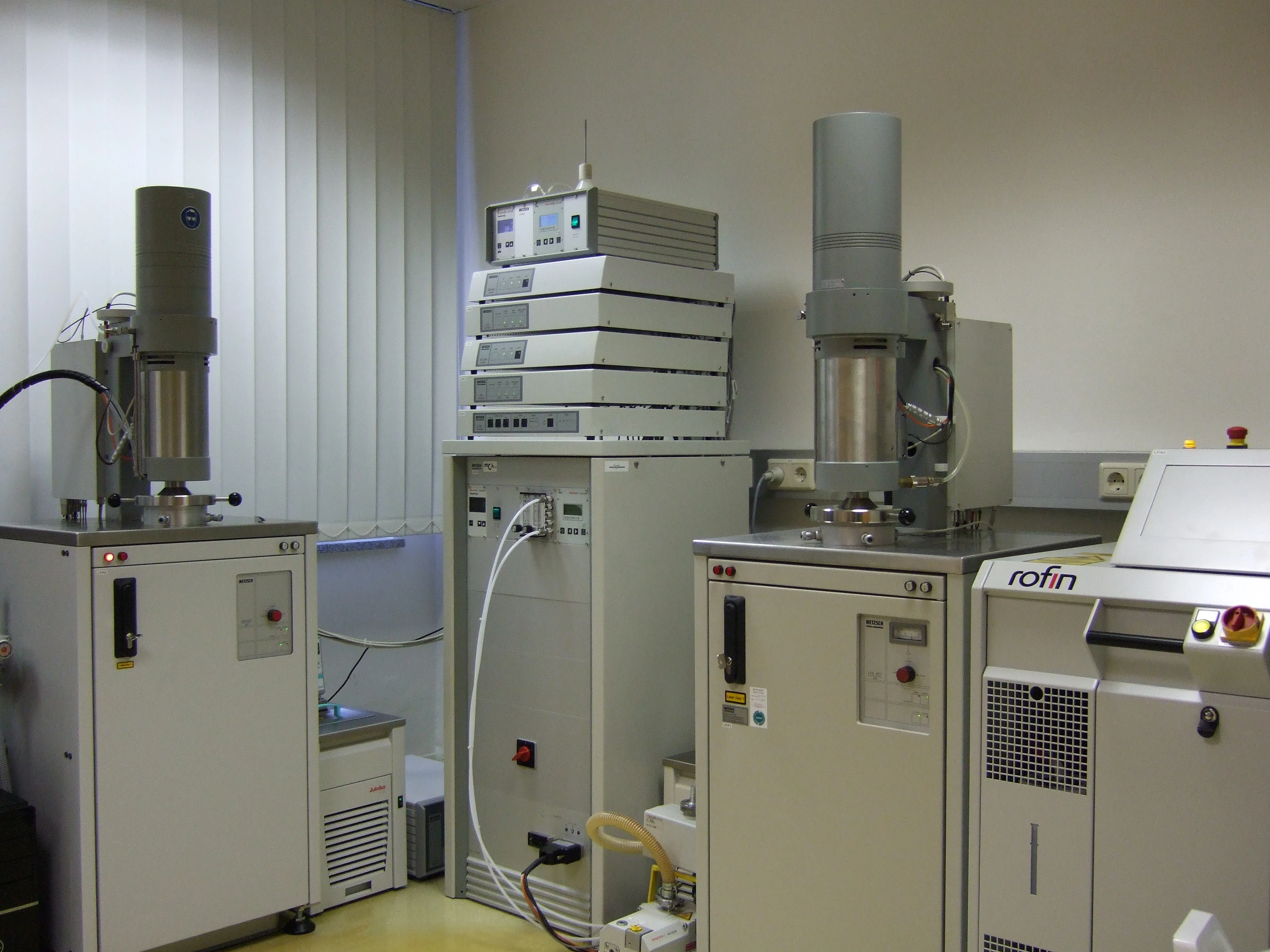
Along with the reliability of the analytical instruments, the excellent customer support provided by NETZSCH-Gerätebau GmbH has been decisive in this long-year collaboration. The long-term availability of spare parts has been just as important as the excellent and always available on-site service, along with the option for comprehensive maintenance of the systems directly at NETZSCH-Gerätebau GmbH in Selb. This combination allows ÖGI to offer a wide range of applications with challenging materials to their customers and partners within the scope of bilateral collaborations amongst national and international projects.
Material Analysis for Space Applications
Materials for space applications have also become an important part of ÖGI’s materials spectrum. Every week, several tons of material from abandoned spacecraft enter the Earth’s atmosphere. The problem here is the uncontrolled disintegration of such spacecraft debris. International agreements now require either controlled re-entry or risk assessment for uncontrolled crashes for each new take-off into low Earth orbit. Numerical simulations of thermal and mechanical loading or burn-up during re-entry are performed for risk management. For improved prediction capability, valid material data up to very high temperatures or down to the molten phase are needed.
ÖGI was and is represented in various international research projects and cooperations. A wide range of materials are tested, including metallic alloys, carbon fiber-reinforced plastics used in satellites and rocket stages, and ceramic fabrics, aerogels and graphite foams used as layer composites for inflatable heat-protection shields.
Ceramic fabrics and graphite foams, however, are particularly challenging for characterizing materials for space applications. As stated, these are used as layer composites for inflatable heat-protection shields (Advanced Inflatable Thermal Protection Systems) for Earth and future Mars missions (figure 2). Since knowledge of the materials’ characteristics is needed for temperatures far above 1000°C, only the laser flash method can be employed; it is the only instrument capable of determining Thermal DiffusivityThermal diffusivity (a with the unit mm2/s) is a material-specific property for characterizing unsteady heat conduction. This value describes how quickly a material reacts to a change in temperature.thermal diffusivity into the high-temperature range. Two LFA 427 systems by NETZSCH are used at ÖGI to this end. The advantage of the laser flash method lies not only in its wide temperature range, but also in its ability to measure fabrics and graphite foams under different pressures and gas atmospheres.
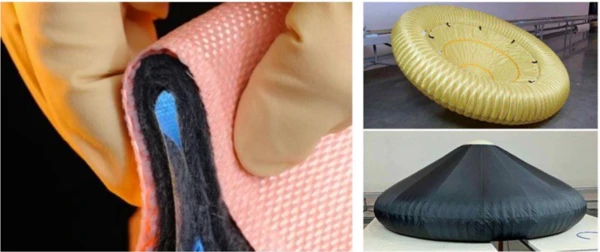
Measurement methodology and evaluation must rise to demands placed not only by issues such as the production of suitable samples, the hard-to-define thickness of fabrics and graphite foams, and partial inhomogeneity, but also to those placed by the porosity of materials. In the following example, a graphite foam and an aerogel were each tested in an argon atmosphere. Figure 3 shows the measurement signal (blue) over time for a graphite foam; figure 4 for an aerogel. Due to the porous structure of the two materials, the laser pulse is no longer entirely absorbed at the surface. To account for the absorption of the laser pulse in the pore structure, the penetration model of the NETZSCH Proteus® LFA software is employed in both cases. To minimize parasitic heat-flux effects, an end of the range of curve fitting (red) is selected shortly after the maximum. In the case of partly radiolucent materials, such as aerogel, the initial signal is not taken into consideration in the evaluation.

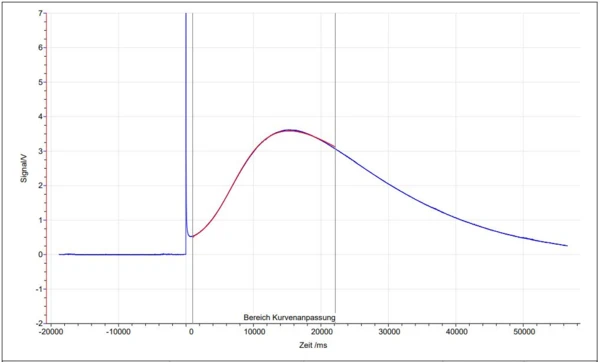
It was possible to use the experience gained at ÖGI from the measurement of porous or partially decomposing materials from the space industry to build up expertise in a further application field: Wood-based materials as building materials for future sustainable construction projects.
Wood-Based Materials for Sustainable Building Projects
Wood as a building material has experienced a strong upswing in recent years. Its share in future building projects continues to rise due to the positive properties of wood in terms of reducing CO2 emissions, low energy consumption during production and also its thermal insulation properties. In this context, wood-based materials are being employed not only in single-family houses, but also increasingly in multi-story buildings or in high-rise construction projects. This allows for sustainable redensification in urban areas. However, the increased use of wood-based materials also places higher fire-protection requirements on wood as a material. The fire resistance of wood constructions must be proven, and to date, this has been done by means of time-consuming and cost-intensive fire tests. Therefore, as with materials for space applications, there is a high interest in the application of numerical simulations; in this case, to predict the fire behavior of wooden structures. As input data for the calculations, thermophysical data for the wooden materials in different states are again required: for moist wood, dry wood, and pyrolyzed material up to the high-temperature range of 900°C. These are collected at ÖGI with the analysis instruments by NETZSCH-Gerätebau GmbH; the LFA 427 is used for this, among others.
A particular challenge in the characterization of wooden-based materials up to the high-temperature range of several hundred degrees is presented, on the one hand, by the porous character of wood and, on the other, by the Decomposition reactionA decomposition reaction is a thermally induced reaction of a chemical compound forming solid and/or gaseous products. decomposition of the material under the influence of high heat exposure, as is the case with laser shots in the LFA. For the measurement of wood up to the Thermal StabilityA material is thermally stable if it does not decompose under the influence of temperature. One way to determine the thermal stability of a substance is to use a TGA (thermogravimetric analyzer). thermal stability limit (start of pyrolytic Decomposition reactionA decomposition reaction is a thermally induced reaction of a chemical compound forming solid and/or gaseous products. decomposition), the samples prepared must therefore be suitably coated. To this end, an adhesive copper foil (approx. 35 µm copper foil + 35 µm acrylate adhesive) on the underside of the sample has proven to be a suitable coating. Due to the porous character of wood, the samples must also be coated on the upper side in order to prevent detection of the temperature rise on the upper side of the sample from the pore space. For this purpose, the samples were coated with a thin layer of thermal paste (approx. 80 µm) (schematic in figure 5). However, the coating affects calculation of the wood’s Thermal DiffusivityThermal diffusivity (a with the unit mm2/s) is a material-specific property for characterizing unsteady heat conduction. This value describes how quickly a material reacts to a change in temperature.thermal diffusivity due to the increase in thickness of the entire sample as well as the various materials. To estimate the influence of the coating, reference measurements were carried out with materials of similar Thermal ConductivityThermal conductivity (λ with the unit W/(m•K)) describes the transport of energy – in the form of heat – through a body of mass as the result of a temperature gradient (see fig. 1). According to the second law of thermodynamics, heat always flows in the direction of the lower temperature.thermal conductivity; these can be measured both with and without coating. Figure 6 shows the measured Thermal DiffusivityThermal diffusivity (a with the unit mm2/s) is a material-specific property for characterizing unsteady heat conduction. This value describes how quickly a material reacts to a change in temperature.thermal diffusivity of black Bakelite®. Related to the measured thickness of the sample, the coating leads to a lower Thermal DiffusivityThermal diffusivity (a with the unit mm2/s) is a material-specific property for characterizing unsteady heat conduction. This value describes how quickly a material reacts to a change in temperature.thermal diffusivity (red curve in figure 6) than for the uncoated sample (blue curve) due to the increase in rise time. By correction of the sample’s entire thickness, the actual Thermal DiffusivityThermal diffusivity (a with the unit mm2/s) is a material-specific property for characterizing unsteady heat conduction. This value describes how quickly a material reacts to a change in temperature.thermal diffusivity of the material can be approximated and the slight deviation can be considered as another term in measurement uncertainty. The thickness correction can also be performed directly with the function integrated in the NETZSCH-Proteus® LFA software in this case.
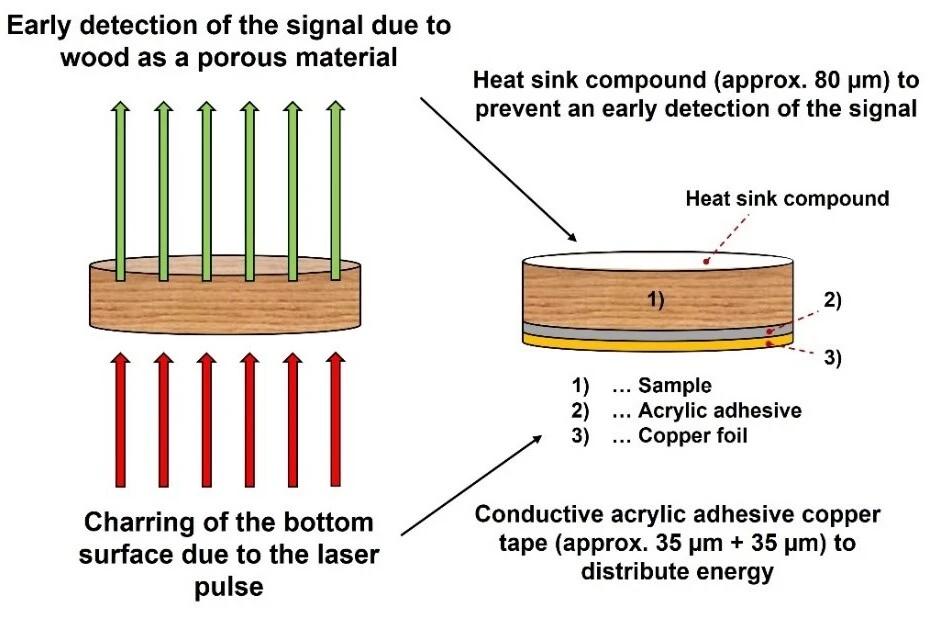
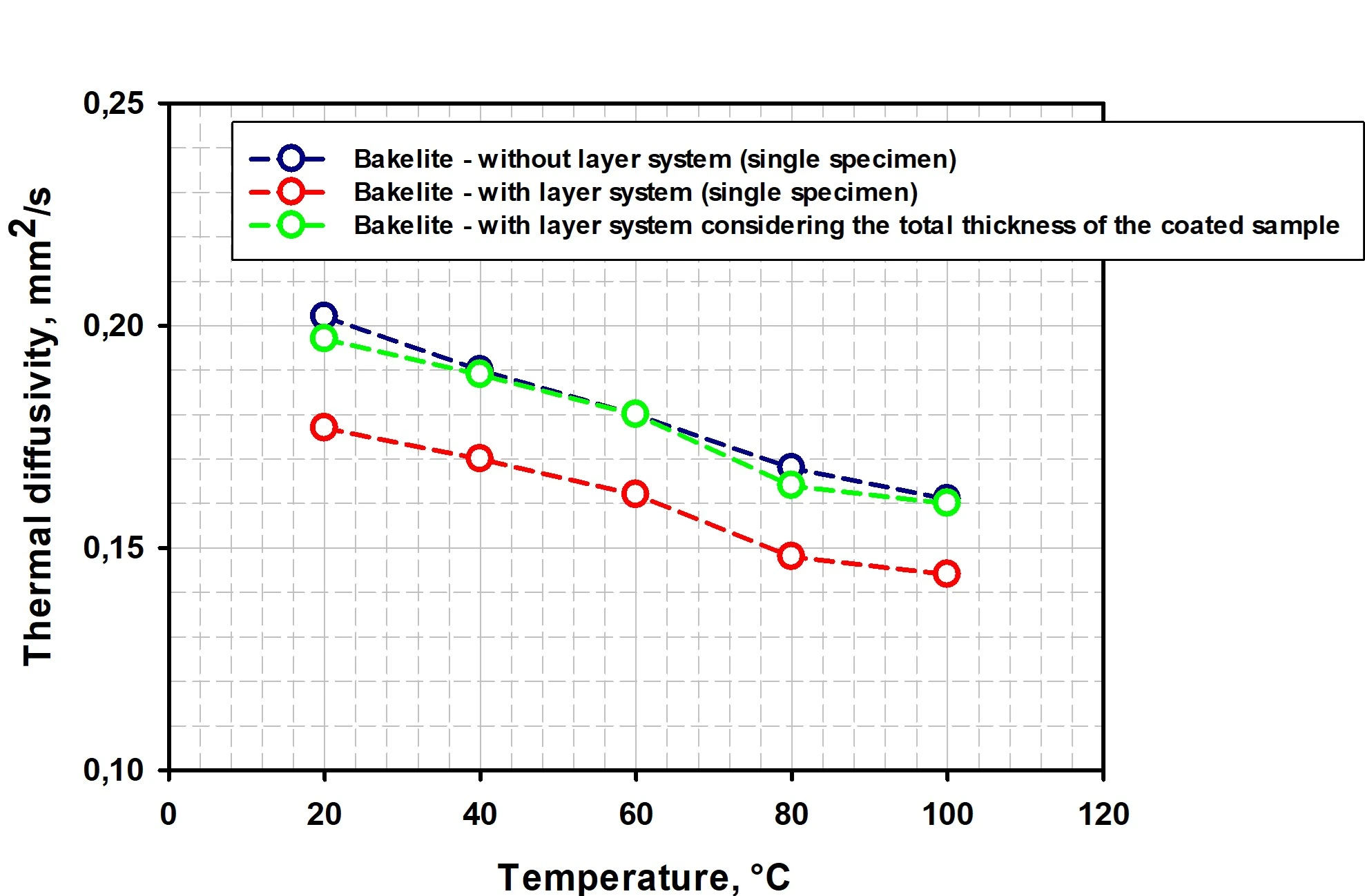
Measurement of the thermal diffusivity of pyrolyzed materials does not require a coating. Due to the porous character of wood or wood charcoal, however, the laser pulse is – as also evidenced by graphite foams – no longer fully absorbed at the surface. In order to take the absorption of the laser pulse in the pore structure into consideration, the penetration model of the NETZSCH Proteus® LFA software is used in the case of pyrolyzed samples. Figure 7 depicts the measuring signal (blue) over time for a charcoal sample and fitting using the penetration model (red).
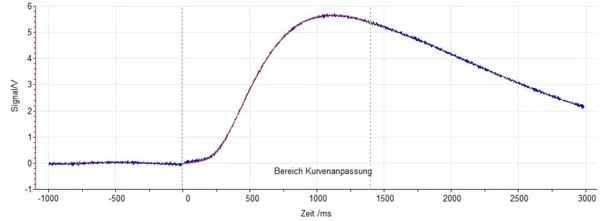
By characterizing different wood-based materials at ÖGI using analytical instruments by NETZSCH, thus creating input data for numerical simulations, a contribution can be made to increasing the proportion of wood-based materials in urban construction and thus to reducing CO2 emissions over the long term.
ÖGI is striving to open up further application fields in the future and to expand existing ones. This will also be done in the future through the excellent collaboration with NETZSCH-Gerätebau. The aforementioned quality of the measuring instruments coupled with the extremely long service life of the systems plays a decisive role here. In addition to the measuring instruments’ easy maintenance, the outstanding customer service is responsible for the long service lives of the systems. Other services, such as a comprehensive range of free-of-charge training courses in the form of numerous webinars, should also be emphasized.
We look forward to continuing the excellent collaboration between ÖGI and NETZSCH-Gerätebau GmbH!